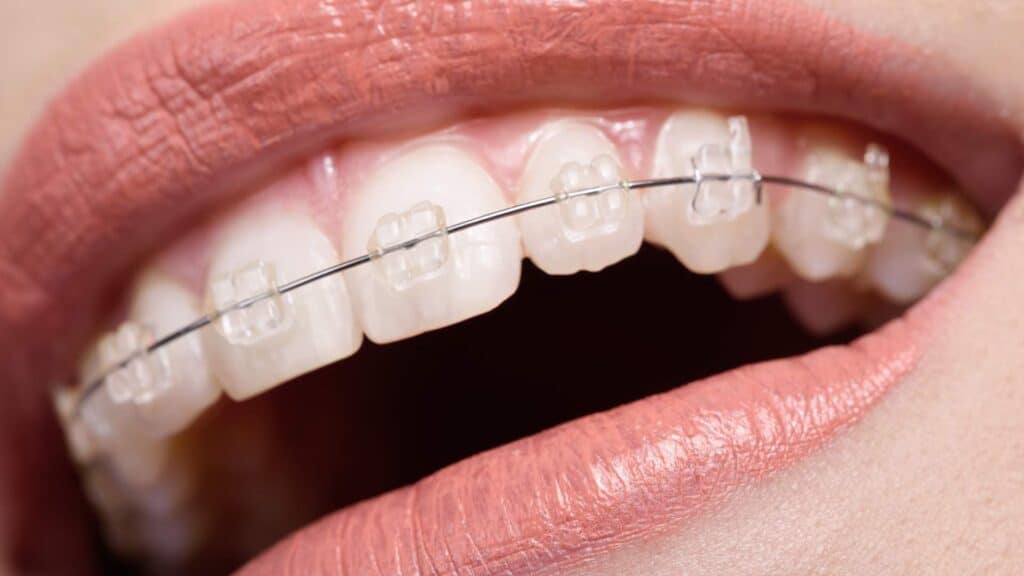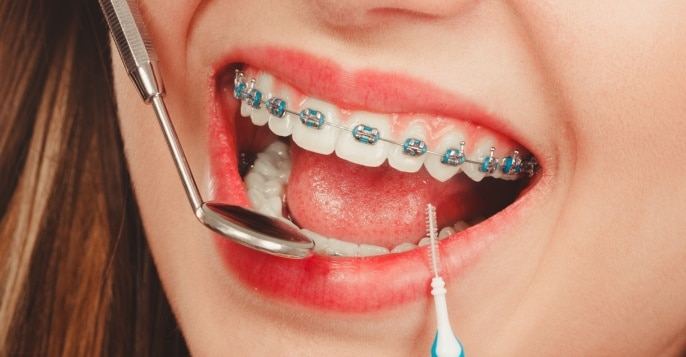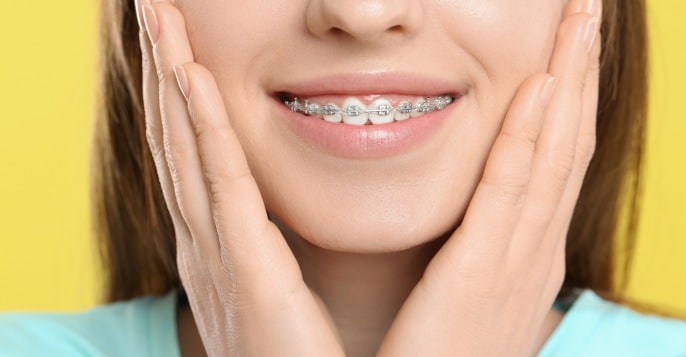No doubt braces are a blessing for those whose teeth are crooked still many people do not enjoy the traditional metal braces. However, there are people who are totally satisfied with having their teeth fused with a set of metal brackets. A few people may not feel comfortable with metal braces so Orthodontists have developed a huge array of bracket systems considering patient satisfaction.
Over the years metal brackets have been the most popular and most used bracket among all other types of brackets and ceramic bracket is the second most used bracket. In this article, everything has been discussed about what are ceramic braces benefit, side effects, pros & cons and costing.
Ceramic brackets
Ceramic brackets realign and straighten the teeth in the same way as conventional metal braces. However, Ceramic braces have become a popular excellent alternative option due to being less noticeable.
Ceramic braces adjust the position of the tooth. They work the same way as conventional metal braces, moving teeth into their ideal position. The main difference between ceramic and metal braces is ceramic braces are less noticeable.
Ceramic Braces consist of
- Brackets- Transparent to opaque in colour
- Wires- can be available white/tooth colour
- Elastics- Can be available in white/tooth colour
Are ceramic braces better than metal?
Ceramic braces are just as effective as metal braces, offering the same reliable result while maintaining a similar treatment approach.
Durability of Ceramic braces:
Ceramic braces are not as durable as conventional metal braces, and in case of breakage, an orthodontist may need to replace the brackets more frequently.
Advantages and disadvantages of ceramic braces
Advantages of ceramic braces
- Less noticeable than conventional metal brace
- Excellent alternative for people with allergy to metal
Disadvantages of ceramic braces
- Often more expensive than conventional metal braces
- Less durability than conventional metal braces
- Likely to stain
Ceramic Vs Metal Braces
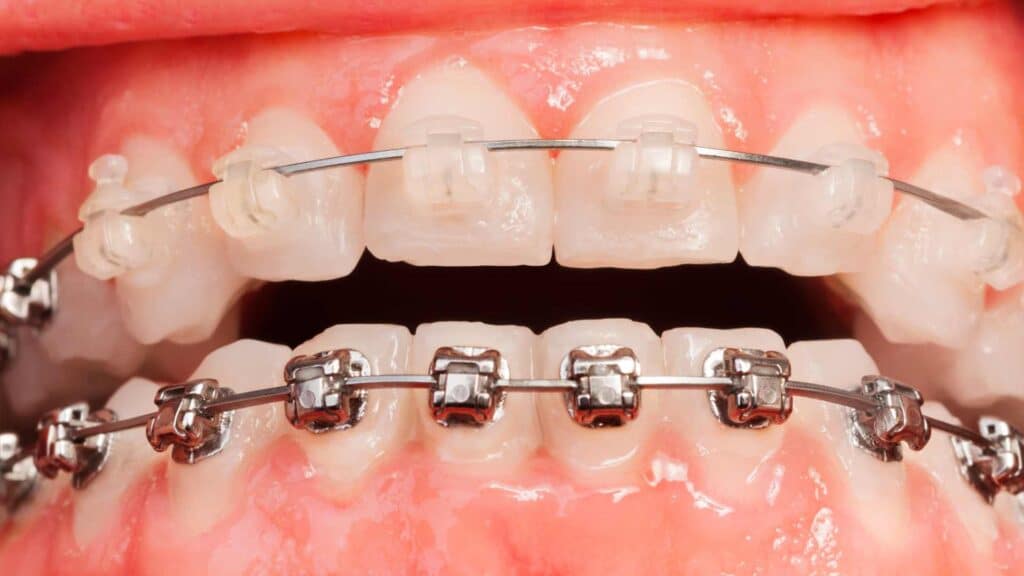
| Ceramic Braces | Metal Braces | |
|---|---|---|
| Appearance | less visible | more visible |
| Durability | less durable | more durable |
| Uses | can treat both serious and cosmetic alignment problems | can treat both serious and cosmetic alignment problems |
| Cost | usually more expensive | usually less expensive |
| Duration and results | similar | similar |
Ceramic vs Aligners
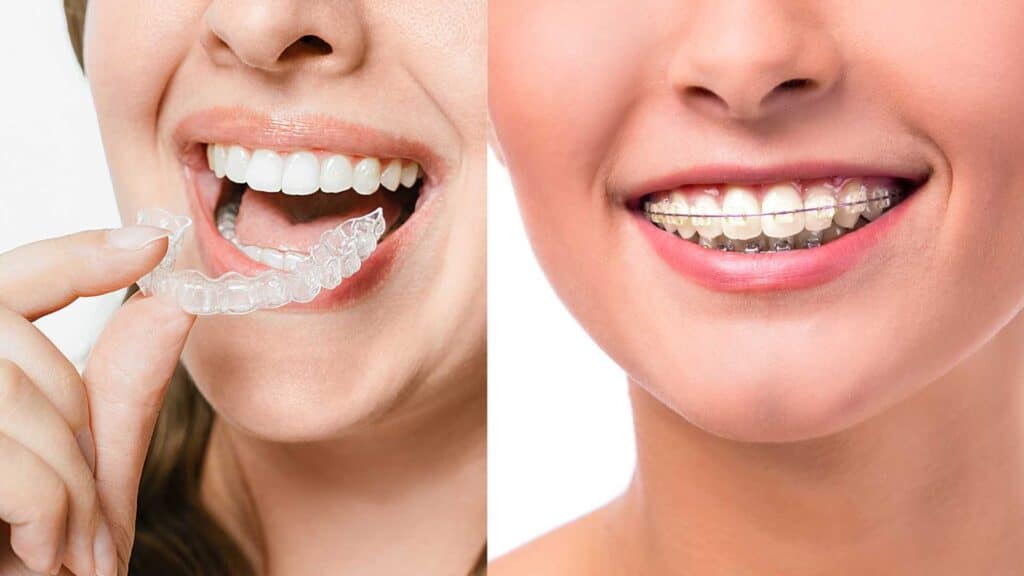
| Ceramic braces | Invisible aligners | |
| Appearance | slightly more visible | less visible |
| Durability | more durable | less durable |
| Uses | can treat more serious alignment problems | treat milder alignment problems |
| Cost | more expensive | less expensive |
| Duration and results | take less time to work | take more time to work |
Mechanisms of braces
During the first appointment the Orthodontist put braces on your anterior teeth and molar bands of molar tubes on posterior molars.
Whenever there is no sufficient space for molar bands they put elastic (separators) anterior and posterior to those teeth and space is created .Once the braces are fixed, Flexible NiTi (Nickel Titanium) wires are placed.
Is there only one size wire?? Or do Orthodontists change wires in every appointment?
No, there are multiple wires which are placed sequentially. Orthodontists don’t change wire every month, it is completely Orthodontist’s decision when to change or replace the wire. Usually when the objectives of wires are achieved then the Orthodontist shifts to the next wire to correct further treatment.
Side effects of Ceramic braces
Not only metal braces but all other braces can cause irritation, discomfort and difficulty in chewing. These side effects are temporary and can be managed using dental wax and medications.
Irritation
1. Mouth ulcers
The brackets and wires can irritate the soft tissues in your mouth, causing mouth ulcers or sores.
2. Allergic reactions
Some people may be allergic to the metals used in the braces, such as nickel, copper, chromium, and cobalt.
Difficulty eating
1. Difficulty in chewing
You might have trouble chewing and eating food, especially after your braces are tightened.
2. Dietary restrictions
Avoid hard or sticky foods to prevent breaking your braces.
3. Staining
One of the major drawbacks of ceramic braces is staining of brackets.

